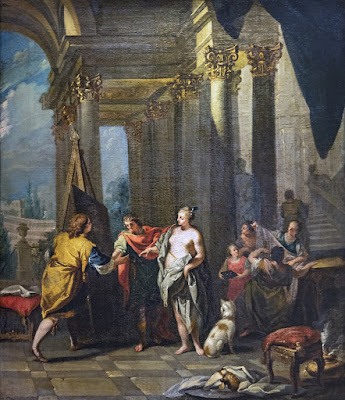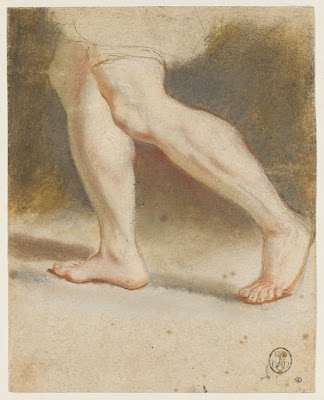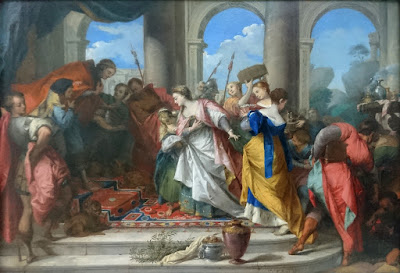 |
| Nicolas Vleughels Head of a Woman before 1737 pastel Musée du Louvre |
 |
| Nicolas Vleughels Study for a Head of Minerva before 1737 pastel Musée du Louvre |
 |
| Nicolas Vleughels Alexander the Great bringing his mistress Campaspe to be painted by Apelles ca. 1715-25 oil on canvas Fondation Bemberg, Toulouse |
 |
| Nicolas Vleughels Study of Head ca. 1716 pastel (study for painting Apelles painting Campaspe) Musée du Louvre |
 |
| Nicolas Vleughels Study of Torso ca. 1716 pastel (study for painting Apelles painting Campaspe) Musée du Louvre |
 |
| Nicolas Vleughels Study of Legs ca. 1716 pastel (study for painting Apelles painting Campaspe) Musée du Louvre |
 |
| Nicolas Vleughels Apelles painting Campaspe with Alexander the Great observing 1716 oil on canvas Musée du Louvre |
 |
| Nicolas Vleughels Study of Legs ca. 1716 pastel (study for lost painting The Road to Emmaus) Musée du Louvre |
 |
| Nicolas Vleughels Study of Arm ca. 1716 pastel (study for painting Abduction of Helen) Musée du Louvre |
 |
| Nicolas Vleughels Study of Foot before 1737 pastel Musée du Louvre |
 |
| Nicolas Vleughels The Queen of Sheba before Solomon 1728 oil on copper Musée du Louvre |
 |
| Nicolas Vleughels Return of the Prodigal Son 1709 oil on canvas private collection |
 |
| Nicolas Vleughels Oriana drawing the Sword (scene from Amadis de Gaule) before 1737 drawing Musée du Louvre |
 |
| attributed to Nicolas Vleughels Study of Woman in Clouds before 1737 pastel Musée du Louvre |
 |
| Nicolas Vleughels Venus and the Three Graces tending Cupid 1725 oil on panel private collection |
 |
| Nicolas Vleughels Telemachus on Calypso's Island before 1737 oil on copper Fitzwilliam Museum, Cambridge |
 |
| Nicolas Vleughels Study of Wings before 1737 oil on paper Musée du Louvre |
 |
| Nicolas Vleughels Self Portrait ca. 1714 pastel Musée du Louvre |
 |
| Edme Jeaurat after Nicolas Vleughels Vulcan as Personification of Fire 1716 engraving Wellcome Collection, London |
"By 1720-1730, all French painters were going to Italy, either through the official academy system or by other means, as was the case for Hubert Robert and François Lemoyne (who got the opportunity to study in Bologna and Venice by winning the favor of a wealthy tax collector). Successive directors of the Academy in Rome included Charles Errard, Nicolas Vleughels, also a member of the Academy of Saint Luke (who installed the Academy in the Mancini Palace in 1727), Jean-François de Troy (who brilliantly replaced Vleughels in 1738), and Charles Natoire (who, after having studied in Italy from 1723 to 1729, became director in 1751, and ultimately remained in Rome when he relinquished the post). There was something remarkable in the current of contributions and acquisitions fueled by this French outpost."
– André Chastel, French Art: the Ancien Régime (1620-1775), translated by Deke Dusinberre (Flammarion, 1996)